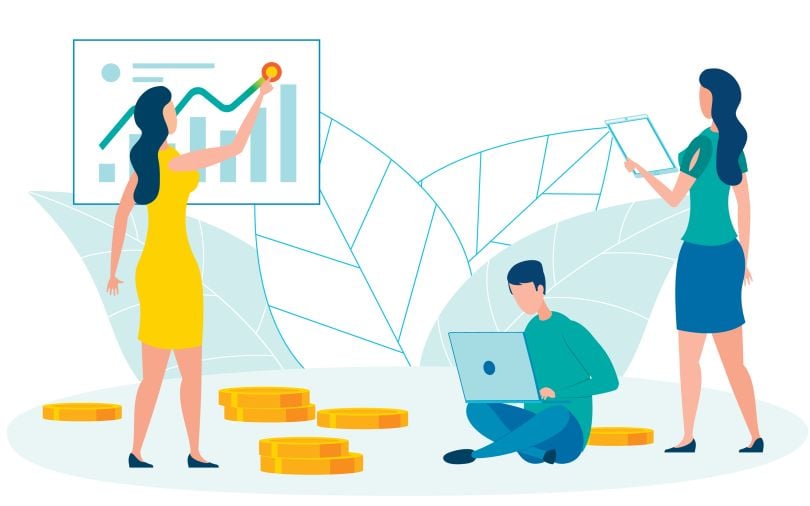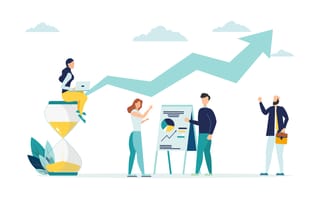As any sales leader knows, there’s no such thing as a perfect sales forecast, but with 10 years of steady economic growth and historical data to pull from, it was at least possible to get close. That is, until March.
Almost overnight, the economy flipped from growth to self-preservation as cases of coronavirus spread across the country. Just like that, the gears of carefully plotted sales forecasts ground to a halt.
The pandemic has thrust an element of unpredictability into forecast models that’s caused sales leaders to re-evaluate their strategies on the fly. Still, it is possible to stabilize those models with data, according to Jason Loh, the global head of sales solutions at Anaplan.
The process requires re-examining the customer pipeline, adapting to current staffing levels and continuing to collect new data to bolster models and replace outdated information. When done well, it can position a company to rebound faster.
Loh has spent the last 20 years specializing in sales technology and sales performance management for companies like Oracle and SAP. In his current role at the sales planning tech company Anaplan, Loh works with other sales leaders on sales strategies and pipeline growth.
We spoke with Loh for insights on how to adapt a sales forecast strategy for the current economy.
3 Tips For Sales Forecast Strategies
- Complete an account segmentation to determine who are viable customers in the new economy and who aren’t. Doing so helps the sales team prioritize its pipeline and optimize its deal flow.
- Incorporate new data into the model using AI to project the viability of customers. Machine learning tools can help sweep the web and glean insights sales teams might miss from earnings calls, company blog posts and hiring statistics, Loh said.
- Treat the sales forecast as an evolving document. Run scenario plans and make adjustments to it to keep the forecast as accurate as possible.

Take Inventory of Your Accounts
The first step Loh recommends sales leaders take any time there’s an economic disruption is to go through a process of account segmentation.
A good sales forecast helps sales leaders understand what levers to pull, be it sales incentives, customer targets or discounts, to meet the target revenue. While sales reps don’t set the forecast, they can use the pipeline scoring to figure out which accounts in their region have a high win-rate and focus their efforts on closing those.
Since an economic disruption like the COVID-19 pandemic throws the customer assumptions and trend data into disarray, re-examining the sales pipeline is crucial, Loh said.
“It’s incumbent upon sales leaders to partner with finance leaders to secure that revenue line and to identify which of that revenue is vulnerable and which of that revenue isn’t vulnerable,” Loh said. “For the revenue that isn’t vulnerable, they need to figure out the path they can walk.”
During an account segmentation, sales leaders need to figure out which accounts are vulnerable to being lost, which might be vulnerable and which are unaffected. To do that, they need data. Part of this is based on using historical customer data to figure out how much their needs fit with the product your business is providing, but it should also include new data reflecting current actions.
New data could include the fact that state governments have classified certain industries as essential, like grocery stores, delivery services and healthcare, while others like transportation and hospitality are seen as inessential, Loh said. But it’s also important to take company actions like hiring, investment choices and earnings reports into account.
“Once I’ve set the account segmentation process and firmed that foundation, I now know the team and the skills of that team to make sure we can execute on that.”
Those could be used as valuable indicators to determine if a company is in survival mode or open to buying services. In scoring the accounts, it’s also important to take regional factors into account, because every state has responded with different restrictions during the pandemic.
When done well, this process can help reps determine high-value targets and spend more time closing those deals than chasing after unavailable customers. It can reduce the time spent in a sales cycle and makes it easier to realize revenue, Loh said.
“Arguably those sales cycles would be faster than with customers who aren’t in a place to buy, and you wouldn’t have to discount as much,” Loh said. “Once I’ve set the account segmentation process and firmed that foundation, I now know the team and the skills of that team to make sure we can execute on that.”
Once the accounts are stabilized, it’s time to make projections off of the new normal, Loh said.
Incorporating New Data Into the Forecast
A forecast model is only as good as the data that goes into it.
While there is an art to sales, it’s especially important to balance those gut feelings and past experiences with data during an economic disruption, Loh said. In fact, relying too much on past assumptions during a changing economy, like, say, that a star sales rep will go on being a star sales rep without any changes, can erode a forecast model.
“We need to make our forecast off of the new normal, not based on what we want it to be,” Loh said. “Part of this assessment is doing this meticulous inspection of the variables that we’re feeding into this forecast so that we can make the best assumptions and predict what our revenue is going to be.”
One way to add more meat to the forecasting model is through adopting AI tools that can scrape the web for prospecting data. It’s a strategy that sales teams are quickly adopting, with the number of sales teams using AI sales tools expected to grow by 139 percent in the next three years, according to a SalesHacker report.
“We’re at the point where the economy is re-opening, but it’s not re-opening equally.”
Loh, whose company offers the AI tool Predictive Insights, recommends using AI to scrape the web for forecasting indicators a salesperson might not be able to gather from calls. This could be analyzing the language used in company blog posts about the state of the business, hiring statistics, number of virus infections by zip code and what’s discussed in earnings reports.
The art comes in in balancing those indicators based on what’s known about the region, the company and the sales team’s expectations. If a sales team is expected to have layoffs, it’s important to factor that into the sales forecast strategy as well.
“We’re at the point where the economy is re-opening, but it’s not re-opening equally,” Loh said. “It’s incumbent on the manager to use that as a throttling mechanism to know what looks good by region and by industry.”

Test and Iterate
At the end of the day, a sales forecast needs to be a living, breathing document, Loh said.
One of the biggest mistakes a sales leader can make is to create a forecast for the year and then slide it in the drawer only to pull it out at the end of the year to see how they did.
Instead, think of the forecast as an evolving science experiment. Sales leaders should be constantly pulling third-party data and examining insights from their CRMs, Loh said. If a sales leader makes a decision to incentivize going after a particular segment of customers, for example, they need to make sure it’s not inadvertently increasing discounts or lengthening the sales cycle.
“Whenever you do a forecast call, you know the number is going to be wrong, but the question is, ‘Is it a little wrong or very wrong?’”
It can also be helpful to use customer data to run scenario plans. If a certain benchmark is hit, like discount rates going up, then a sales leader can figure out how to adapt their strategy based on that plan.
“It’s understanding and having full insight into the data and being able to negotiate the trade-offs when you make those decisions because not everyone has an unlimited affordability envelope,” Loh said.
Ultimately, the only predictable certainty within a forecast is that it will be wrong, Loh said. The goal is to be off by as little as possible, which requires constant reassessment.
“Whenever you do a forecast call, you know the number is going to be wrong, but the question is, ‘Is it a little wrong or very wrong?’” Loh said. “There’s no silver bullet. There’s no one reason we missed our forecast, it’s lots of smaller, incremental things. So it’s pulling all those data sets in and marrying it against things like industry benchmarks, and it’s constantly reassessing your performance.”




